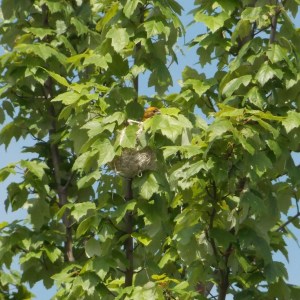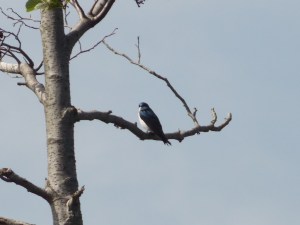On Sunday I rode out to Eagle Marsh to play mop-up duty on shorebirds. Of the possibilities, the two Yellowlegses were the most obvious outstanding omissions from my green list.
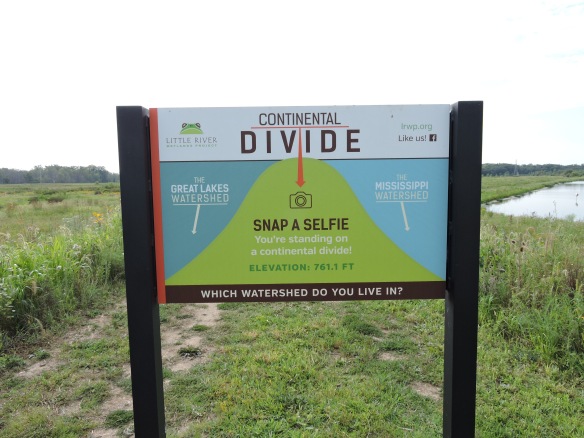
Continental Divide
In the last year and a half there was some serious earthwork at Eagle Marsh. Some of it was to repair infrastructure damaged from flooding, some of it was habitat restoration, and some of it was to control invasive Asian Carp. Eagle Marsh is on the last line of defense for the Great Lakes, with the fish reaching the property but no farther. The newly opened Continental Divide trail meanders along high ground in between the two watersheds, with carp on the Mississippi side but not the Great Lakes side. Spillways between levees have chain link fences projecting over the high water mark to physically prevent the fish from making the jump.
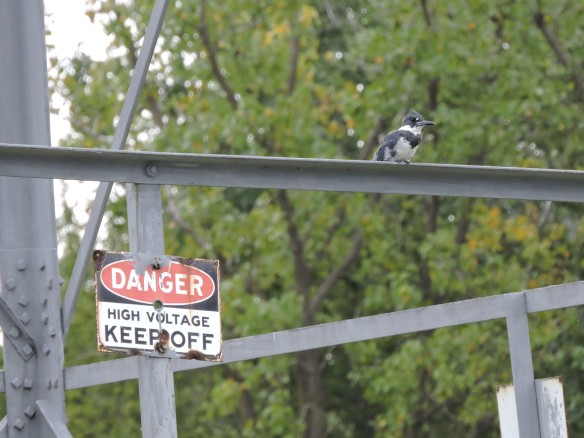
Belted Kingfisher
Even with such high stakes, this Belted Kingfisher was not interested in following anyone’s rules. Punk.
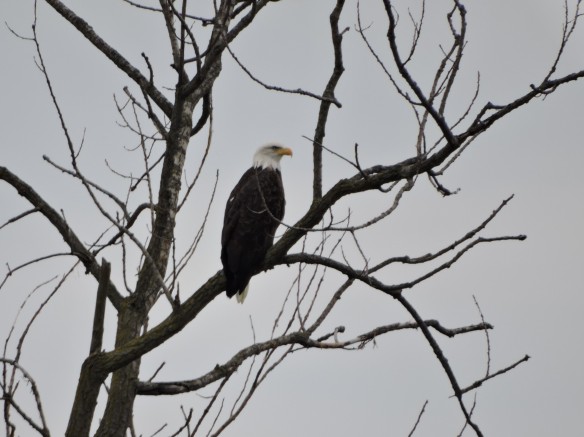
Bald Eagle
Meanwhile in the other watershed, I wondered if the possibility of a clumsy eagle dropping its dinner over the berm could be the proverbial straw on the camel’s back?
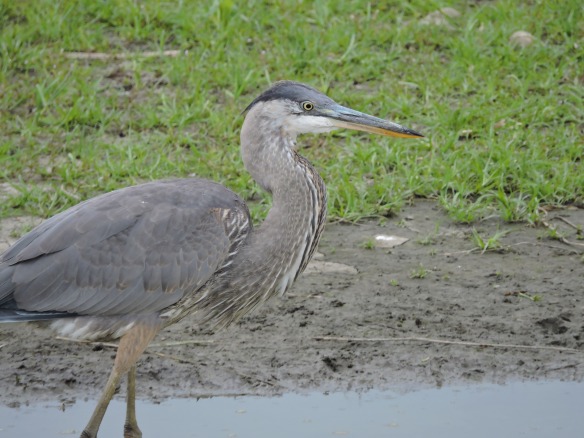
Great Blue Heron
The birds didn’t seem to bother with such questions. As always, it was all about food. Usually skittish, this Great Blue Heron did not care at all about how close I was.
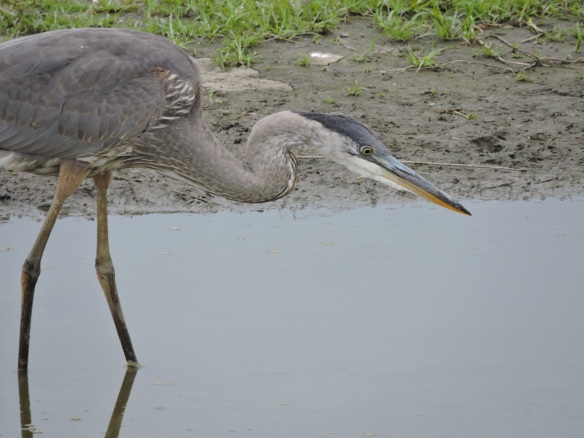
The definition of potential energy
It slowly crouched into a striking position and waited patiently as fish rippled around in the water.
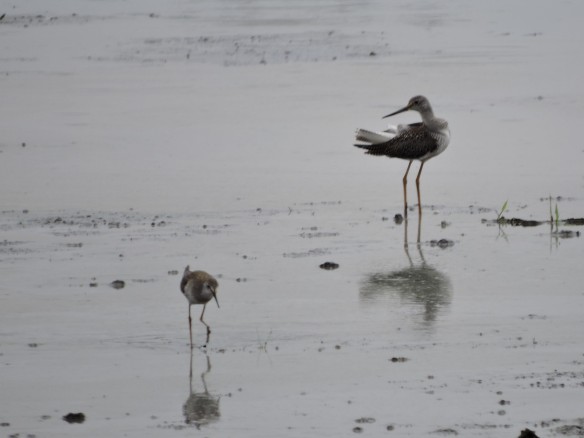
Yellowlegs
The heron had much more patience than I did. While it watched for lunch, I turned my camera to the mud behind it to try and get one of those Lesser/Greater Yellowlegs comparison shots. This is the best I could do. But both birds were had, so they officially gave me a new green year personal record and only two thirds of the way through the year. Woo!

Lunch
Meanwhile, the heron made its catch, the action of which I missed. It didn’t appear to be a carp either. Bummer. At least it was a substantial meal.
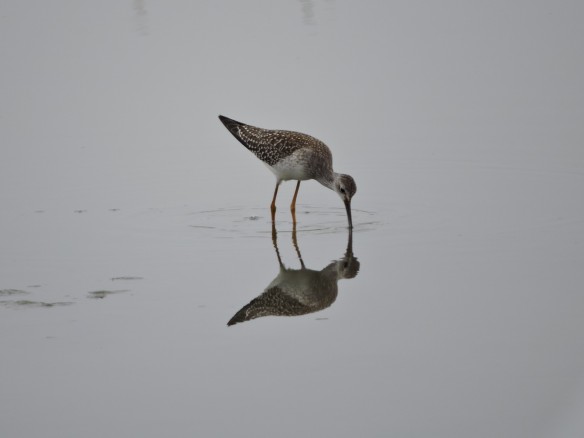
Lesser Yellowlegs
So back to shorebirds I turned. I could not turn any of the Yellowlegs into Stilt Sandpipers, and try as I might, I could not turn any of the Leasts into Semipalmateds.
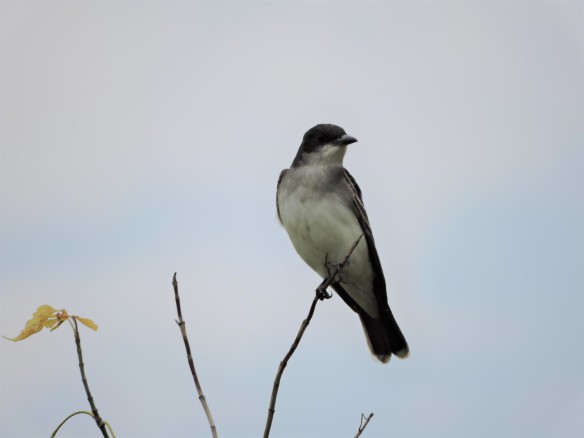
Eastern Kingbird
So in an uncharacteristic move for Eagle Marsh, I got distracted by passerines. A small flock of young kingbirds bravely defended their tree from a Cedar Waxwing.
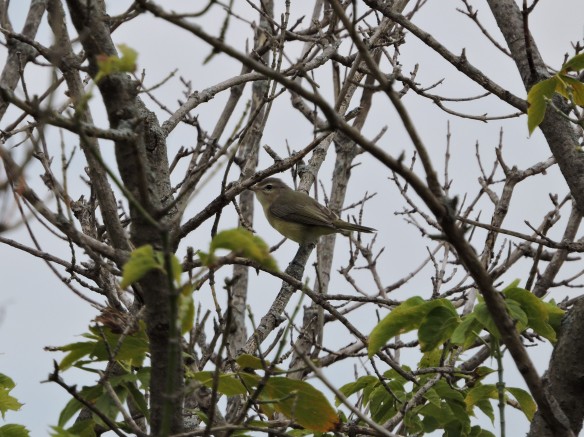
Warbling Vireo
But they totally didn’t care about this bird. In my field notes I wrote this down as ‘vireo sp.’ Then I convinced myself it was a Tennessee Warbler. Following that, some spirited discussion on Facebook had a couple of experts whose word I trust very highly call it a Philadelphia Vireo which would have been a county bird. But the final verdict, I believe, is Warbling Vireo. Even with those dark lores, the overall coloration and shape of the bird make it the most boring possibility.

Green Heron
A bird with no possible conflict of identity was this Green Heron.
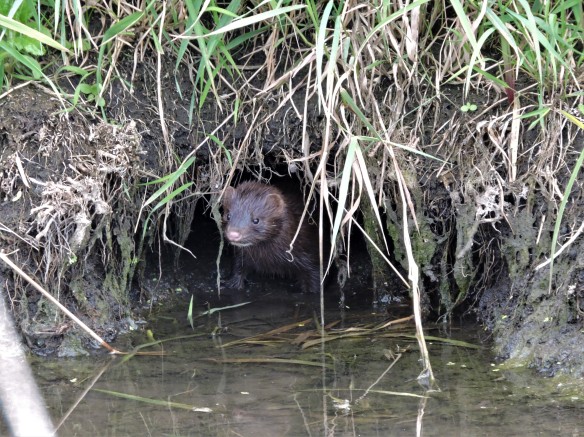
American Mink
The heron was hunting the exact same stretch of water as a sneaky American Mink, which was the last thing I saw before heading home.
I mounted my bike and started riding home on the towpath trail, but then I remembered that I still had an uneaten Cliff bar with me. I pulled over and as I was eating a weird song erupted out of the brush very close to the trail and to my right. I recognized the song which sounded like a DJ scratching records, but it took me a moment to place it. Bell’s Vireo! Talk about a right-place-right-time bird. I managed this cell phone video to catch a little bit of the song (if you can hear it over the shrillness of the insects). BEVI is regular but uncommon in Allen County, with only a handful of records each year. I had heard this species twice before at Eagle Marsh, but it was totally off my radar as a possibility on my ride that day. This was definitely a bird only made possible by biking, since there would not have been reason for me to be in that area if I drove.
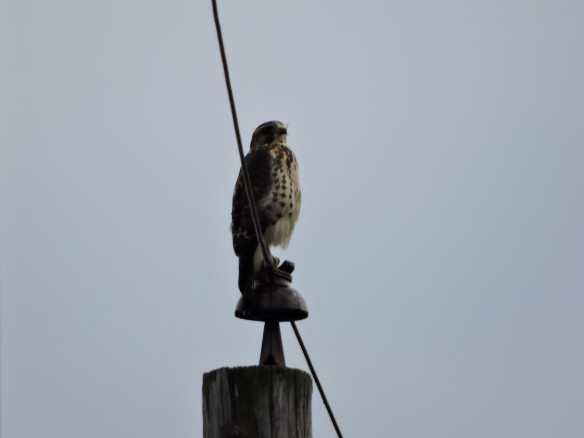
Red-shouldered Hawk
The weekend was incredibly productive even from home, where a Red-shouldered Hawk was sitting on a utility pole across the street when I got home from work on Thursday. This yard bird was also new for the green list this year, meaning that it plus my three additions on Saturday give me 146 species, and it’s still only August. I could count up the four most glaring holes in my list to put me at the ever-elusive 150 mark, but I don’t want to jinx it. Let’s just say that most wanted #1 rhymes with “Fileated Hoodpecker.”

















